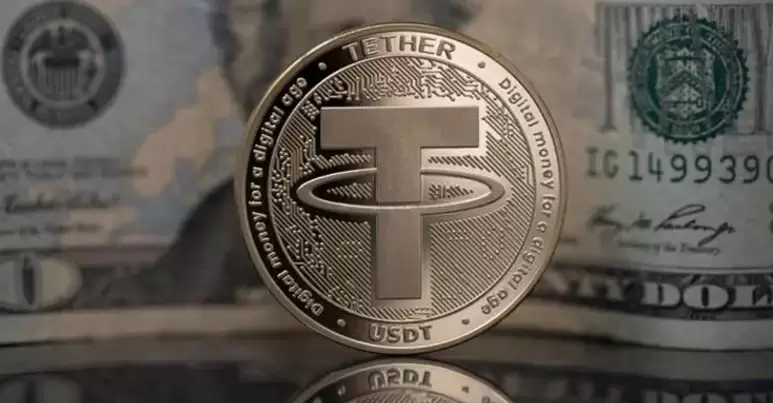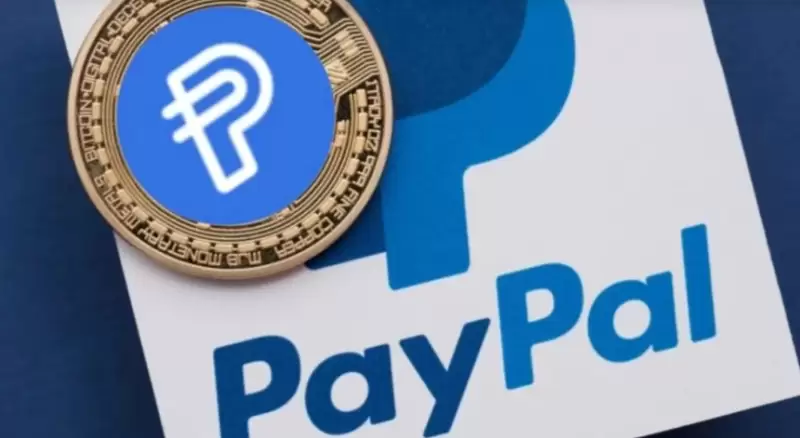【ukex官网】BM 对稳定币的新想法,是社区受益还是昙花一现(附 BM 原文)

摘要:BM 提出的新型稳定币,则是要根据原 BitUSD 的算法,再与“严重超额抵押的空头仓位”相结合,加上 EOS 的激励措施,继而提出一种能够保证流动性的运行在 EOS 链上的稳定币。
昨日,BM 发表了有关于新的稳定币设计的想法。
随着 Bitfinex 与 Tether 事件的爆雷,USDT 再度被推到了风口浪尖。与此同时,暂缓增发脚步的 USDT 为其它稳定币打开了市场缺口,在此过程中,伴随着 DeFi (去中心化金融)这一概念的愈发火热,人们对包括 MakerDao、Gemini Dollar、USD Coin 等在内的稳定币的算法、保证流通性等手段等做出了探索。而 BM 提出的新型稳定币,则是要根据原 BitUSD 的算法,再与“严重超额抵押的空头仓位”相结合,加上 EOS 的激励措施,继而提出一种能够保证流动性的运行在 EOS 链上的稳定币。
特点:
严重超额抵押的空头仓位结合 Bancor 算法,为多头和空头头寸提供流动性,从而提供高流动性,并且让抵押物在时间推移、价值损失的情况下,还能够保证平稳运行,从而保护市商。
背景
2013 年 Bitshares (注:比特股,BM 之前的区块链创业项目)提出了比特美元(BitUSD)的概念,其旨在提供一个去中心化交易所的解决方案(人人可发行、人人持债仓)。成为锚定美元的稳定币,从而提供法币与比特币的置换与稳定。
BitUSD 通过在想要利用 BitShares 代币(BTS)的人和想要价格稳定的人之间创建订单来运营。为了向购买 BitUSD 的人提供流动性,BitUSD 持有人被允许在多日延迟后强制平仓至少抵押的空头头寸。这创造了一个有效的追加保证金,并确保 BitUSD 的购买者,他们的代币总是价值约 1 美元的 BTS。为防止违约,如果价格反馈低于最低保证金要求,最低抵押空头头寸也可能被强制平仓。
注:如同当今银行体系利用抵押品以借贷的方式铸造美元一样,比特股 X 也是可以利用抵押品铸造出 BitUSD (比特美元)。
而不同于传统银行利用房产作为抵押品借出美元,
比特股 X 会利用 BTSX (股份)作为抵押品借出 BitUSD。如果抵押品的价值相较于 BitUSD 的价值有所下跌,比特股将会自动售出部分抵押的 BTSX 以弥补亏空(强制平仓),并返还剩余的 BTSX 给抵押人。
BitUSD 的主要问题是缺乏流动性:可用的 BitUSD 供应有限、市场价差传播、做市商必须经营交易机器人,以便在内部订单簿上移动订单。
(注:BM 认为,这种情况下,BitUSD 缺乏流动性,但其算法仍能够提供高流动性。)
显而易见,BitUSD 的机制,虽然让 BitUSD 的持有者获得了流动性,但是,空头头寸并没有得到流动性保证。
最后,当无法涵盖最少抵押的头寸时,整个市场就会发生黑天鹅事件。当发生这种问题时,挂钩会永久损坏,并且在 BitUSD 和 BTS 之间建立固定的汇率。
缺乏激励创造了 BitUSD,低流动性的风险(没有不合理的下滑就无法弥补),意想不到的追加保证金通知,以及安全市场制造机器人的困难,意味着 BitUSD 的
供应量很小,息差很高。
还有许多其他项目利用了过度担保头寸和保证金要求的变化,他们都面临着与 BitUSD 类似的问题。
(注:BitUSD 的问题:1、缺乏流动性 2、只为一方提供强制结算)
值得一提的是,虽然传统的衍生品市场实行“期货交易”,允许人们提供抵押品,并在未来某个固定的时间以固定的价格进行结算,这些期货合约是可替代的,可以在一定的时间内交易,但由于到期和需要结算 / 转仓,所以这种方式不适合创建挂钩令牌。
Bancor 算法提供了两种资产间的自由流动,同时保护其外汇储备不会流失给老练的交易员。无论针对 Bancor 算法执行的订单数量和种类如何,当资产对的价格回到初始起点时,该算法总是会产生利润。
一个典型的 Bancor 算法有两个“连接器”,代表市场价值相等的余额。该算法成功的在 EOS
RAM 等市场提供了自动流动性。(注:BM 认为,虽然 BitUSD 具备不足,但其算法具备成功案例)
Pegging 算法
这种稳定币的算法基于这样一个概念:稳定币是空头对多头提供的服务
。这项服务要求卖空者为稳定币提供流动性,如果对稳定币有需求,那么市场相对稳定,做市商的服务提供商也会有利可图。
其他钉住汇率的算法让卖空者相互竞争,而不是促进它们的合作,目的是将钉住汇率的服务推向市场。在这些其他算法中,空头竞相回补和抵押其头寸,并担心空头挤压。
我们的算法的前提是那些愿意在抵押资产(如 EOS)中略微杠杆化的人可以通过促进 EOS 和可互换挂钩资产(例如美元)之间的市场交易
来赚钱,其价值的设计,是在允许的偏差范围内跟踪价格。
我们的目的不是用户创建独立的空头头寸,而是创建一个全局空头头寸。卖空头寸是一个中性且可逆的过程(减去交易费用),前提是在此期间不发生其他交易。
交易费用不是杠杆的主要动机,而是买入头寸股份的动机。
为此,BM 认为,这意味着 400% 的超额担保或更高的目标是可行的。允许卖空者在担保资产中只是用少量杠杆,这样他们就有机会赚取交易费用。
做市商最初是通过在合约中存入抵押品创建的,该合约将在做市商(MMS)中创建代币,并将代币交给最初的存款人。
举个例子,假设抵押品是 EOS,而挂钩的是美元,其设计目的就是跟踪 EOS 美元的 24 小时价格中位数。
目标准备金率是确定的,例如 400%,其中,
75% 的 EOS 存款将作为多余的抵押品,其余的 25% 将放在 Bancor 连接器中。此时,自动做市商的合约将创建许多美元代币,使 EOS 和美元连接器余额的市场价值与 Price
feed (价格供应)的初始价值相同。
(注:BM 想通过为降低大部分市场流动性风险的空头方提供资产创建、提供流动性等方式进行激励,同时利用 Price feed 来引导市场)
在初始条件下,
做市商拥有连接器中的 100%,因此没有净负债(必须回购美元),市商的账面价值等于连接器中持有的 EOS 价值加上多余的抵押品 EOS,再减去从连接器中出售的任何流通美元。
在这个初始设置之后,任何人都可以从市商那里购买美元,这就为市商建立了未来的回购债务。
这意味着,
当用户从市商那里购买美元时,报价将会上升。如果每个购买美元的人都将其卖出,那么连接器最终处于初始状态,对交易收取的任何费用,都将导致 EOS 连接器余额中 EOS 的净增加。
考虑到这一设置和 400% 的准备金目标,我们可以证明实际准备金与卖出的美元之比将远远超出 400%。为了降到 400%(没有市场价格变化),整个美元连接器将不得不买断,这将推动美元价格无限。实际上,做市商会自动提高买入美元多头的成本,因为可用的美元多头供应减少。
做市商提供的现货价格等于连接器余额中 EOS 与美元的比值。当现货价格与 Price feed 偏离超过可接受的幅度(如+/-2%)或超过允许的时间(24 小时),做市商将更具市场情况采取下列行动:

该算法的目标是,始终将状态移动到更接近初始状态
,即比 Bancor 多 3 倍的额外抵押品和美元连接器中 100% 的美元。显然,在有流通美元的情况下,连接器不可能达到 100% 的美元,但当 EOS 相比于美元的价值明显上升时,流通供应量的百分比会下降。
抵押物转移或美元发行的速度应将目标价格调整到目标时间(如 1 小时)内可接受的范围。理论上,交易者应该像美元价值 1 美元一样买卖美元,因为他们有信心在不久的将来总能以 1 美元的价格卖出美元。
这意味着,当 EOS 和美元的相对价格稳定时,做市商不必依赖于 Price
feed 来纠正实时价格,而 Bancor 算法针对操纵者的安全性保护连接器余额不被交易员丢失。
在配置参数时,关键是要尽量减少主动做市商的频率,当需要干预时,干预应是缓慢而渐进的。市场参与者不应该抢在市商之前获利。
该算法的结果是一个固定资产,遵循 24 小时中值,而不是瞬时值。只有当做市商的 24 小时中位数显著大于真实市场的 24 小时中位数时,它才会积极修正稳定汇率。
当市场跳跃时,我们希望交易员与 Bancor 算法交互,以投机的方式领先于 24 小时的中位数。这种提前运行可以防止强制调整 Bancor 的连接器,除非在长时间的情况下,
中位数价格走势越慢,做市商的风险越小,但钉住美元与实际美元之间的偏差越大。使 Bancor 算法具有偏离较大百分比(例如 5%)的能力也最小化了由于馈送导致的定价的人为交互。
买卖 MMS 令牌
(注:MMS 资产的设计,是为了给稳定币做出贡献的人提供收益用的)
任何人在任何时候都可以贡献新的 EOS 来购买 MMS 和 USD 组合。这是通过在添加新的 EOS 后,保持 MMS、EOS、Bancor 连接器中的 USD 和流通中的 USD 的比例来实现的。个人收到的 MMS,加上百分之一的新创造的美元比例的美元流通。美元和 EOS 也被添加到连接器和超额准备金中。然后用户可以出售 EOS 的美元,并重复这个过程,或者只是持有多余的美元或 EOS。
销售 MMS 令牌需要提供的美元数量等于 usd_circulation * MMS_Sell /
MMS_Supply。这与他们在购买带有 EOS 的 MMS 时收到的美元数量相同 (减去任何交易费用)。
这个过程可以看作是分割和连接相同的空头头寸。一旦你控制了空头头寸的所有未偿债务,你就可以解除它,收回所有抵押品。这个过程的关键是
保持不变,即有人用 / 作为抵押品买卖做市商不会改变 MMS、EOS、USD 和 USD 的流通比率。
如果你想出售庄家 1% 的股份,你还必须购买并覆盖 1% 的流通美元。幸运的是,你可以从做市商那里购买流通的美元,所以总是有流动性的。
市场交易费用
市场交易费用会不断对做市商进行资本重组,而无需任何集体杠杆作用的投入。无论市场条件如何,那些被杠杆化的人都不可能减少他们的抵押品或者不能逐渐加强抵押品。由于初始抵押品比例较高,例如 4 倍,
抵押品的下跌速度必须比交易费用的累计速度快 75%。
黑天鹅
黑天鹅是指做市商无法维持美元在价值附近的价格。当多余的抵押品消失时,就会发生这种情况。当这种情况发生时,做市商将继续运作,但美元的价格将独立于哺育浮动。精明的观察者可能会考虑从连接器的一侧删除 USD 以维持价格,但这是不可取的,因为这会在连接器中的剩余 EOS 上创建一个运行。
一旦多余的抵押品消失,通过让价格浮动,那些想要提前退出的人将为流动性和正在进行的交易支付溢价,从而对其余各方进行资本重组。
即使在黑天鹅交易期间,以交易费用为代表的收入流也会激励交易各方提供抵押品,并为做市商提供资金。如果抵押品资产 (例如 EOS) 没有预期未来价值的恢复,那么挂钩资产 (例如美元) 的持有者将以市场决定的价格在连接器中获得剩余 EOS 的公平份额。
与其他一些制度不同,黑天鹅事件并不是特例,市场有一个无缝的、自然的恢复方法来恢复挂钩。
如果没有多余的抵押品,做市商可以配置为防止出售 MMS 代币,同时允许以 10% 的折扣购买带有 EOS 的 MMS。
这将对做市商进行资本重组,使新的 MMS 持有者受益于先前的持有者。一旦多余的抵押品被恢复,MMS 就可以像上面描述的那样再次出售。抵押品过度损耗的确切点和折价幅度是可以调整的变量,以使完全损耗的风险最小化,并使激励机制最大化,从而在不过度惩罚先前 MMS 持有者的情况下,迅速对市场进行资本重组。
价格
我的建议是,挂钩的目标是 24 小时的中间价格,而不是瞬时价格。
这将减少与钉住汇率制背离的频率和幅度,同时又不会削弱钉住美元作为美元替代品的价值。实际上,它将部分日内波动风险转移给美元持有者 (偏离平均值),同时仍在对冲美元持有者对长期波动的风险。
结论
与 BitUSD 等系统相比,我们的挂钩方法通过向提供抵押品的空头提供交易费用,同时有效消除空头的大部分流动性风险,从而激励资产创造和流动性。
此外,该算法为市场双方提供相同的流动性,其中 BitUSD 仅向市场的一方提供强制结算。交易手续费持续不断地重新在市场中抵押,能够随着价格的不断变化来恢复,这只需要交易手续费收入比资产贬值速度大就可以做到。其认为,这一措施将最大化使用者的实用性,同时最小风险化。
-----------
市场评价
对于 BM 提出的新的高流动性稳定币算法,有人提出了质疑的声音。
BTS 理事会成员、YOYOW 联合创始人,GDEX 去中心化交易所创始人刘嘉陵认为,
BM 此举破坏了 Bancor 协议的最基本条件,这种基于 EOS 的稳定币难以持续运行。
其表示,Bancor 协议的一个要点是,主体交易价格只由设定的抵押率和新资产供应量决定,不受其它因素影响。
而在 BM 设想的逻辑里,不但没有一个固定的的抵押率(Bancor 意义的固定抵押率是指 1 稳定币 =CW*1EOS,CW 固定),而且又引入了新的影响价格的因素,那就是 Bancor 连接器中的 EOS 资产还随时可以增减,增减只为影响 SPOT 价格。
其结果是,资产发行主体根本无法保证通过交易保持收支平衡。由于市场上攻击者常有,亏损是高概率事件。还有,单独一个全局债仓的设置也缺乏足够缓冲,使得黑天鹅事件发生的概率变高。
而在今日,BM 又现身电报群与社区成员讨论了稳定币的相关问题。
BM 表示:1、B1 没有开发稳定币,我只是说出了我想法,想让社区受益; 2、B1 将在 6 月份揭示未来的发展方向,MAS 还需要某种稳定的记账单位;
3、稳定币不能空投,用户必须通过购买的方式获得,这是因为稳定币是一种债务性资产,他需要实际资产作为支撑;
4、提问:USD 没有任何实际资产做支撑,他难道不是稳定币吗?BM:USD 是相对稳定,但与黄金相比,USD 是不稳定的。
附:High Liquidity Price Pegged Token Algorithm
Today I introduce a new token pegging algorithm that provides high liquidity
and narrow spreads, while being robust against default in the event collateral
loses value over time. The basis of our algorithm is a heavily over-collateralized short position combined with the Bancor algorithm to provide
liquidity to both long and short positions. A price feed is utilized to guide
the market, but its influence is limited to situations where there is a
prolonged deviation so as to protect the market maker from abuse.
Background
In 2013 BitShares introduced the concept of BitUSD, a “smart coin”, backed by
BTS tokens, which was designed to track the value of the dollar. BitUSD
operated by creating an order book between those who wanted leverage on the
BitShares token (BTS) and those who wanted price stability. To provide
liquidity for those who purchased BitUSD, BitUSD holders were allowed to
force-settle the least-collateralized short position at the price feed after a
multi-day delay. This created an effective margin-call and assured buyers of
BitUSD that their token was always worth about a dollar worth of BTS. To
prevent default, the least collateralized short position could also be force
closed if the price feed fell below the minimum margin requirements.
The primary problem with the BitUSD approach is the lack of liquidity, the
limited supply of BitUSD available, and the market spread. Market makers were
required to operate trading bots that move orders on the internal order book.
While the BitUSD holders were provided liquidity, the short positions were not
guaranteed liquidity. Lastly, the entire market is subject to a black-swan
event when the least collateralized position is unable to be covered. When
this happens the peg is permanently broken and a fixed exchange rate is
established between BitUSD and BTS.
The lack of incentive create BitUSD, the risks of low liquidity (unable to
cover without unreasonable slippage), unexpected margin calls, and difficulty
in running safe market making bots meant the supply of BitUSD was small and
the spreads were high.
There have been many other projects that utilize variations of over-collateralized positions and margin requirements. All of them suffer similar
problems to BitUSD.
Traditional derivative markets implement “futures trading” which allows people
to post collateral and settle at a price feed at a fixed point in the future.
These futures contracts are fungible and can be traded for a certain time, but
due to the expiration and required settlement / rollover they are not suitable
for creating a pegged token.
The Bancor algorithm provides automated liquidity between two assets while
protecting its reserves from being lost to sophisticated traders. Regardless
of the number and kind of orders executed against the Bancor algorithm, the
algorithm always generates a profit when the price of the asset pair returns
to its original starting point. A typical Bancor market maker is known as a
relay which has two “connectors” which represent balances of equal market
value. This algorithm has been successful at providing automated liquidity in
markets such as the EOS RAM market.
The Pegging Algorithm
This pegging algorithm is based upon the concept that a pegged token is a
service provided by the shorts to the longs. This service requires the shorts
to provide liquidity for the pegged token. If there is demand for the pegged
token then trading fees earned by the market maker should be profitable for
the service provider even if the market is relatively flat.
Other pegging algorithms pit shorts against each other rather than facilitate
their cooperation for the purpose of bringing a pegged currency service to the
market. In these other algorithms shorts compete to cover and collateralize
their positions and are worried about short squeezes.
The premise of our algorithm is that those willing to be slightly leverage-long in a collateral asset (such as EOS), can make money by facilitating
market making activities between EOS and a fungible pegged asset, (e.g. USD),
whose value is designed to track a price feed within an allowed deviation
range.
Instead of users creating independent short positions, our algorithm creates
one global short position and allows users to buy and sell stake in this
global position. Buying and selling stake in the short position is a neutral
and reversible process (minus trading fees) provided no other trades occur in
between. Instead of leverage being the primary motive, trading fees are the
motive for buying stake in the position. This means that a target of 400% over
collateralization or higher is viable allowing shorts to be only slightly-leveraged in the collateral asset so that they have the opportunity to earn
trading fees.
The market maker is initially created by depositing collateral into the
contract. The contract will create tokens in the market maker (MMS) and give
them to the initial depositor. For the sake of example, we will assume the
collateral is EOS and that the pegged token is USD and is designed to track
the 24hr median EOS dollar price.
A target reserve ratio is decided upon, for example 400%. Based upon a 4x
reserve ratio, 75% of the EOS deposited would be set aside as excess
collateral, and 25% would be placed into a Bancor Relay connector with weight
of 50%. At this time the automated market maker contract will create a number
of USD tokens to fund a second Bancor Relay connector such that the market
value of EOS and USD connector balances are the same at the initial value of
the price feed.
In the initial condition the market maker owns 100% of the USD in its
connector and therefore has no net liability (USD it must buy back). The book
value of the MMS is equal to the value of the EOS held in the connector plus
the excess collateral EOS and minus any circulating USD sold from the
connector. After this initial setup anyone can buy USD from the market maker
which establishes a future buy-back liability on the MMS holders. The
mathematical properties of the Bancor Relay algorithm mean that as users buy
USD from the market maker the offer-price will increase. If everyone who
bought USD then sold it back then the connectors would end up in their initial
condition. Any fees charged on the trades would result in a net increase in
EOS held in the connector balance.
Given this setup and a 400% reserve target, we can demonstrate that the actual
reserves vs sold USD will be far in excess of 400%. In order to get down to
400% (without market price changes) the entire USD connector would have to be
bought out which would push the USD price to infinity. In effect, the market
makers automatically raise the cost of buying a long USD position as the
supply of available long USD positions decreases.
The spot-price offered by the market maker is equal to the ratio of EOS to USD
held in the connector balances. When the spot price deviates from the feed
price by more than an acceptable margin (e.g. +/- 2%) for more than an allowed
period of time (e.g. 24 hours), then the market maker will do one of the
following actions depending upon market conditions:
SPOT = price of USD according to Bancor
FEED_USD = price of a federal reserve note in EOS
if( SPOT > FEED_USD )
if( Excess Collateral < 3x EOS Connector )
then slowly move EOS Connector to Excess (lowering SPOT)
else
then slowly add new USD to Connector (lowering SPOT)
else if( SPOT < FEED_USD )
if( excess collateral )
then gradually buy USD using excess collateral and destroy it (raising SPOT)
else do nothing
The goal of this algorithm is to always move the state closer to the initial
condition of having 3x more excess collateral than Bancor balance and 100% of
USD in the USD connector. It is obviously impossible to achieve 100% USD in
the connector while there is circulating USD, but the circulating supply can
decrease in percentage terms when the value of EOS rises significantly
relative to USD.
The rate at which collateral is moved or USD issued should target a price
correction to the within the acceptable range within a targeted period of time
(e.g. 1 hour). In theory traders should buy and sell USD as if it were worth
about 1 dollar because they have confidence that they will always be able to
sell it for about 1 dollar in the near future. This means that when relative
price for EOS and USD is stable that the market maker will not have to rely on
the price feed to correct the real time price and the security of the Bancor
algorithm against manipulators protects the connector balances from being lost
to traders.
When configuring parameters such as allowed deviation from feed, rate of
correction, and delay until start of price correction it is critical to
minimize the frequency of needing active intervention into the market maker
and when intervention is needed, that intervention is slow and gradual. Market
players shouldn’t be able to front-run the market maker’s moves for profit.
The result of this algorithm is a pegged asset which follows an 24-hr median
value instead of an instantaneous value. It only actively corrects the peg
when 24-hr median of the market maker is significantly greater than the 24-hr
median of the real market. When the real market jumps we want traders to
interact with the Bancor algorithm to speculatively front-run the 24-hr
median. This front-running prevents the forced adjustment of the Bancor
connectors from occurring except in prolonged cases. The slower the median-price moves the less risk to the market maker, but the greater deviation
between pegged USD and real USD. Giving the Bancor algorithm the ability to
deviate by a larger percent (say 5%) also minimizes artificial interaction
with pricing due to feeds. The less artificial interaction the less relevant
the instantaneous accuracy of the price feeds become.
Buying and Selling MMS Tokens
Anyone at any time may contribute new EOS to buy a combination of MMS and USD.
This works by maintaining the ratio of MMS, EOS, USD in Bancor connector and
USD in circulation after adding new EOS. The inpidual receives MMS plus a
percent of the newly created USD proportional to the USD in circulation. USD
and EOS are also added to connectors and excess reserves. Users can then sell
the USD for EOS and repeat the process or simply hold excess USD or EOS.
Selling MMS tokens requires providing a number of USD equal to USD_circulating
* MMS_Sell / MMS_Supply. This is the same quantity of USD they would have
received when buying MMS with EOS in the first place (minus any trading fees
charged).
This process can be viewed as splitting and joining identical short positions.
Once you control all outstanding debt of your short position you can unwind it
and get all the collateral back. The key to the process is maintaining the
invariant that someone buying or selling the market maker with/for collateral
does not change the ratio of MMS, EOS, USD, and USD circulating. If you want
to sell 1% stake in the market maker (MMS) then you must also buy and cover 1%
of circulating USD. Fortunately, you can buy circulating USD from the market
maker itself so there is always liquidity.
Market Trading Fees
As users buy and sell USD, EOS, and MMS a trading fee is charged. This fee
represents a revenue stream that results in capital gains to those holding
MMS. The higher the volatility the more trading occurs and the more fees are
generated. These fees continuously recapitalize the market maker without
requiring any input from those who are collectively leveraged. Regardless of
market conditions it isn’t possible for those who are leveraged to reduce
their collateral or fail to gradually top it up. With a high initial
collateral ratio, eg 4x, the collateral would have to fall by 75% faster than
trading fees accumulate.
Black Swans
A black swan is any event where the market maker is unable to maintain the
value of USD near the price feed. This occurs when the excess collateral is
gone. When this happens the market maker will continue to function but the
price of USD will float independent of the feed. Astute observers will likely
consider removing USD from one side of the connector to maintain the price,
but this is unadvisable as it would create a run on the remaining EOS in the
connector. By letting the price float once the excess collateral is gone,
those who want to exit early pay a premium for the liquidity and ongoing
trading will recapitalize the remaining parties.
Even during a black swan, the revenue stream represented by trading fees
incentivizes parties to provide collateral and fund the market maker. In the
event the collateral asset, (e.g. EOS), has no expectation of future recovery
of value, then holders of the pegged asset (e.g. USD) will get a fair share of
remaining EOS in the connector at market determined prices.
Unlike some other systems, a black swan event is not a special case and the
market has a seamless and natural recovery method to restore the peg.
In the event excess collateral is gone, the market maker could be configured
to prevent selling of MMS tokens while simultaneously allowing the buying of
MMS with EOS for a 10% discount. This recapitalizes the market maker giving
benefit to the new MMS holders over the prior holders. Once excess collateral
is restored MMS could be sold again as described above. The exact point of
excess collateral depletion and the magnitude of the discount are variables
that can be adjusted to minimize the risk of complete depletion and maximize
the incentive rapidly recapitalize the market without overly punishing prior
holders of MMS.
Price Feeds
There are many different ways to produce a trusted price feed; however, there
are some recommendations for better results. A pegged token can track any
price feed, including artificial feeds such as a 30-day moving average.
Typical price feeds attempt to track instantaneous spot prices, but this
expectation is unrealistic for safe market makers. The slower prices change
the easier it is for a peg to be maintained because market participants have
more time to adjust.
It is my recommendation that pegs target the 24hr median price rather than the
instantaneous price. This will reduce the frequency and magnitude of
deviations from the peg without undermining the value of the pegged USD as a
dollar alternative. In effect, it transfers some of the intraday volatility
risk to the USD holder (deviation from the mean) while still hedging the USD
holder against long-term volatility.
Some experimentation in the market will be required to determine the proper
balance between reactivity of price feed and profitability of the market maker
due to volatility.
Alternative Price Correction Measures
When traders interact with the algorithm they are either pushing the bancor
price further from the feed, or closer to the feed. It should be possible to
have a dynamic fee on trades that grows higher the further the trade would
push the bancor price from the feed. This allows MMS holders to increase
profits and discourages manipulators from causing excessive deviation from the
price feed.
Conclusion
Compared to systems like BitUSD, our pegging approach incentivizes asset
creation and liquidity by providing trading fees to the shorts who post
collateral while effectively eliminating the majority of liquidity risks of
the shorts. Furthermore, this algorithm provides equal liquidity to both sides
of the market where BitUSD only provided forced-settlement to one side of the
market. Trading fees continuously re-collateralize the market and enable it to
recover from losses due to changing prices. So long as income from trading
fees is greater than the average fall in the value of the collateral asset the
system can remain solvent and liquid. We believe this approach maximizes the
utility to all participants while minimizing risks.
Note: The economic arrangements described in this post may or may not be
subject to regulations in your jurisdiction. Please seek professional legal
opinions before engaging in economic arrangements described. Actual
performance will depend upon many factors including implementation and
selected configuration parameters. The ideas and opinions expressed above are
my own and not those of my employer.
来源:共享财经 Neo 责任编辑:Alian
(本文系共享财经原创,转载请注明出处及作者)
- 免责声明
- 世链财经作为开放的信息发布平台,所有资讯仅代表作者个人观点,与世链财经无关。如文章、图片、音频或视频出现侵权、违规及其他不当言论,请提供相关材料,发送到:2785592653@qq.com。
- 风险提示:本站所提供的资讯不代表任何投资暗示。投资有风险,入市须谨慎。
- 世链粉丝群:提供最新热点新闻,空投糖果、红包等福利,微信:msy2134。






 币圈的入门秘籍
币圈的入门秘籍










